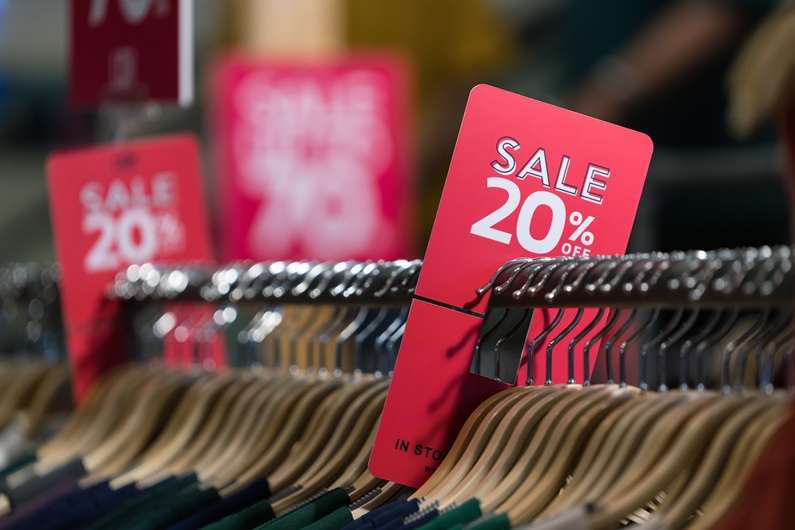
Raising a child is one of life’s most rewarding experiences, but it also comes with ongoing financial challenges. From diapers and formula to clothing, strollers, and early learning toys, baby and toddler expenses can add up faster than expected. Many parents find themselves looking for reliable ways to save money while still ensuring the best for their little ones.
The good news is that with a few smart strategies, verified public deals, and mindful purchasing habits, you can provide everything your child needs without straining your budget. This complete guide explains how to stretch your dollars responsibly while maintaining comfort, quality, and safety.
1. Why Baby and Toddler Costs Add Up Quickly
A newborn’s first year can bring a surprising number of expenses. Essential items such as diapers, wipes, formula, clothing, and baby gear are used every single day and babies outgrow them fast.
The toddler years introduce new costs like educational toys, preschool supplies, and nutrition-focused foods. Most of these purchases are recurring, which means that saving even a few dollars on each item can add up to significant long-term relief.
Instead of focusing only on price tags, it’s important to think in terms of value what lasts longer, performs better, and supports your child’s development without constant replacement.
2. Planning Before You Buy
Many parents start shopping out of excitement or urgency. But spontaneous buying often leads to overspending. Planning your purchases helps you stay organized and spot genuine deals.
Try these steps:
-
Make a categorized checklist. Divide items into needs (diapers, car seat, crib) and nice-to-haves (extra toys, designer outfits).
-
Research reviews before buying. Parents’ feedback is valuable when deciding between brands.
-
Compare unit prices. A larger pack of diapers might look expensive but costs less per piece.
-
Buy in stages. Babies grow fast, so avoid stocking up on clothes or shoes that might not fit later.
With a little preparation, you can balance practicality with affordability.
3. Using Verified Coupon Sources
The internet is full of coupon sites, but not all are trustworthy. Parents should always verify that a promotion is legitimate before using it.
A few safe strategies include:
-
Visit verified platforms like Coupon Finders, which list genuine brand deals without requiring sign-ups or hidden conditions.
-
Subscribe to official brand newsletters for baby product companies like Pampers, Huggies, or Gerber. They often send verified public promotions directly to your inbox.
-
Use loyalty programs from major retailers. Stores such as Target, Walmart, and Amazon frequently reward consistent shoppers with cashback or digital coupons.
Avoid any website that asks for sensitive personal details just to access a discount.
4. Diaper and Wipe Savings Made Simple
Diapers and wipes are some of the most frequent purchases parents make, but there are several easy ways to save:
-
Buy in bulk during verified sale periods. Large boxes often reduce cost per diaper.
-
Use store brands. Many have the same materials as national brands but are priced lower.
-
Compare per-unit pricing. A smaller pack with a lower total price can still cost more per diaper.
-
Join manufacturer reward programs. Brands like Pampers and Huggies allow you to earn points for future discounts.
Remember, your baby’s comfort depends on fit and absorption, not price. Testing a few brands first can prevent waste from unused packs.
5. Formula and Feeding Essentials
If your baby uses formula, you know it can quickly become one of the biggest recurring expenses. However, there are practical ways to lower those costs safely:
-
Sign up for formula brand rewards. Companies like Enfamil and Similac often provide coupons and free sample packs.
-
Ask your pediatrician for samples. Many clinics partner with manufacturers to offer complimentary starter cans.
-
Consider store-brand equivalents. These are FDA-regulated and often nutritionally identical to name brands.
-
Use subscription services. Some online retailers give discounts when you set up recurring deliveries.
Always check expiration dates and storage conditions before purchasing formula from any source.
6. Baby Gear and Furniture
Larger purchases such as strollers, cribs, and high chairs often make parents nervous because of their cost. Fortunately, you can still find quality gear at fair prices if you shop carefully.
Tips for getting the best value:
-
Time purchases around storewide baby events. Many retailers host annual baby sales that include strollers, carriers, and nursery items.
-
Check certified refurbished or open-box items. Reputable retailers sometimes sell gently used products that meet safety standards.
-
Look for convertible furniture. Cribs that turn into toddler beds or car seats with multiple stages help you buy once and use for years.
-
Avoid secondhand car seats. Safety standards change frequently, and you may not know the item’s full history.
A good rule of thumb is to save on accessories but invest in products tied to safety.
7. Baby Clothing and Seasonal Shopping
Babies grow fast, and clothing can quickly become too small. The secret to saving money on baby clothes is buying ahead and timing purchases wisely.
-
Shop end-of-season sales. Retailers discount remaining stock by up to 70% once seasons change.
-
Buy a size larger when possible. Slightly roomy clothes last longer.
-
Mix essentials with statement pieces. Not every outfit needs to be brand name.
-
Swap with trusted friends or family. Hand-me-downs are a timeless and sustainable savings tool.
Focus on soft fabrics, comfort, and easy maintenance instead of fashion trends.
8. Saving on Toys and Early Learning Products
Toys contribute to development, but they can also drive impulse purchases. Many parents feel pressure to buy the “latest” learning gadget, but young children benefit most from simple, interactive play.
To save money and encourage creativity:
-
Choose multi-purpose toys. Building blocks, shape sorters, and soft books grow with your child.
-
Follow recall updates to ensure safety.
-
Look for open-ended toys. Items that can be used in multiple ways encourage imagination and last longer.
-
Borrow from toy libraries or swap groups if available in your area.
The goal is to provide enrichment, not clutter. A small collection of well-chosen toys can engage a toddler for years.
9. Food and Snack Savings for Toddlers
As your child transitions to solid foods, grocery bills often increase. You can keep costs low while maintaining nutrition by:
-
Cooking in batches and freezing portions.
-
Buying seasonal produce. It’s fresher and cheaper.
-
Watching for store promotions on baby snacks and cereals.
-
Using digital coupons available on official retailer apps.
Preparing some meals at home reduces reliance on packaged food and helps introduce healthy eating habits early.
10. Subscriptions and Memberships Worth Considering
Subscription models can simplify shopping but must be chosen wisely.
Good options include:
-
Diaper and wipe subscriptions with automatic deliveries and discounts.
-
Baby box memberships that send trial-size products for minimal cost.
-
Warehouse club memberships for bulk buying at lower prices.
Avoid subscriptions that charge fees for basic access. Always check the cancellation policy before signing up.
11. Shopping Secondhand Safely
Not everything has to be bought brand-new. Many baby and toddler items can be purchased secondhand as long as safety and cleanliness are ensured.
Great secondhand buys include:
-
Baby clothes
-
Toys without wear or damage
-
Books and learning tools
-
Nursery furniture made from solid materials
Avoid secondhand items that affect safety such as car seats, cribs, or feeding accessories that cannot be sanitized properly.
12. Timing Purchases Around Major Events
Retailers run special promotions tied to holidays and awareness months. For example:
-
January and February: Clearance on last year’s nursery gear.
-
April: Baby Safety Month promotions on monitors and car seats.
-
September: Back-to-school deals on toddler items.
-
November: Broad discounts on nearly all baby essentials during national shopping events.
Knowing these cycles ensures you never buy at full price.
13. Health and Wellness Essentials
Healthcare costs can also be reduced responsibly:
-
Use generic medications when approved by your doctor.
-
Buy first-aid kits during pharmacy sales.
-
Track vaccination programs. Many communities offer free or low-cost immunization clinics.
A small emergency kit at home can prevent expensive last-minute purchases during minor illnesses.
14. Building a Baby Budget That Works
A clear budget helps you track how much you actually spend on baby needs each month.
Include categories like:
-
Diapers and wipes
-
Food and formula
-
Clothing and toys
-
Health and wellness
-
Savings for future milestones
Adjust monthly based on your child’s growth stage. The goal isn’t perfection it’s awareness.
15. Parenting with Confidence and Financial Clarity
Parenthood is filled with decisions, and financial planning is one of the most empowering. Saving money doesn’t mean cutting corners it means prioritizing what truly matters.
By combining verified public discounts, seasonal timing, and thoughtful budgeting, parents can confidently provide for their children without unnecessary financial stress.
Platforms like Coupon Finders make this process easier by gathering genuine offers, brand promotions, and educational tips in one trusted space.
Every parent deserves peace of mind, and that begins with information. When you shop with awareness, you save not just money but time, energy, and the reassurance that you’re giving your baby or toddler the best start possible.








